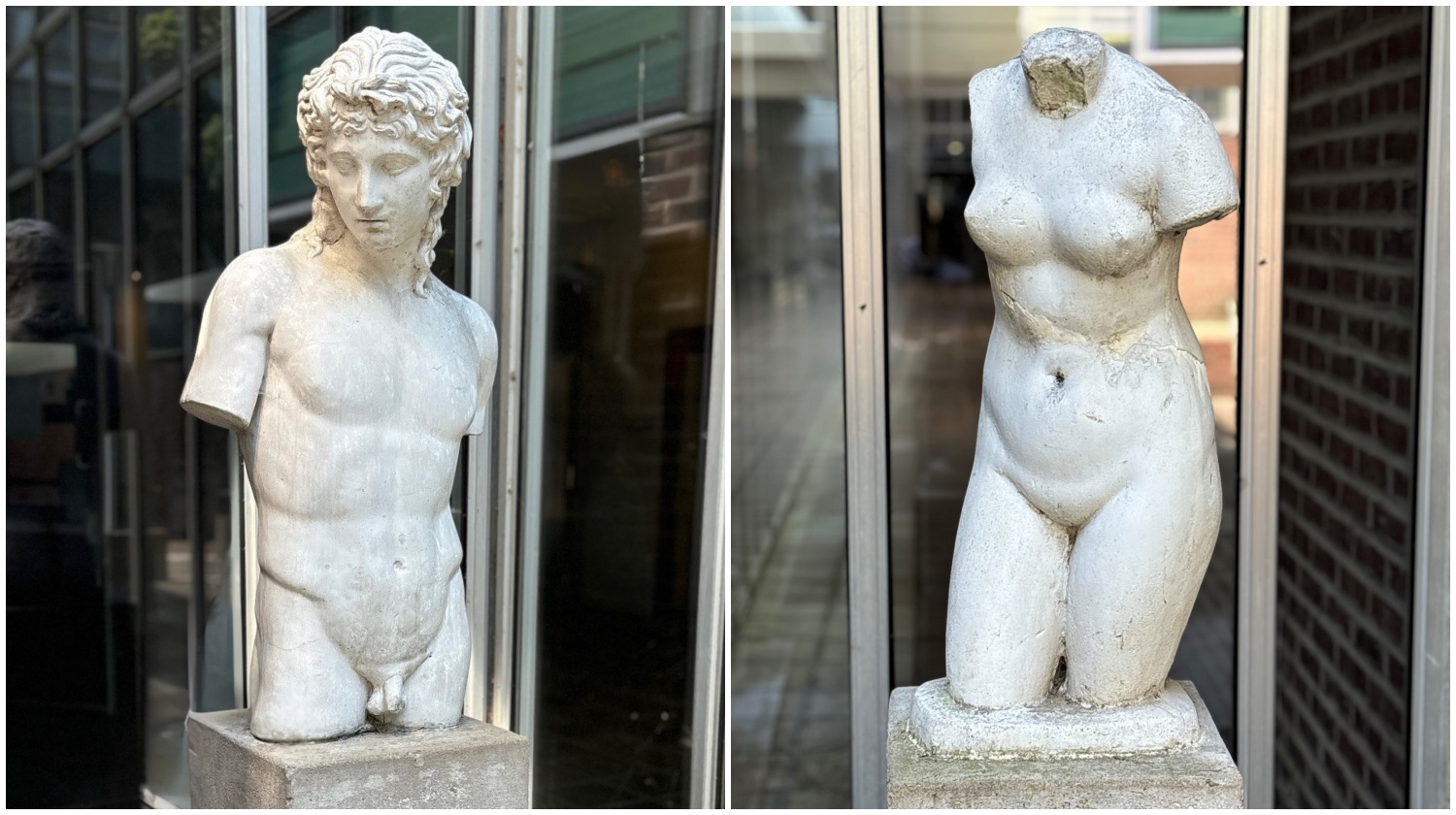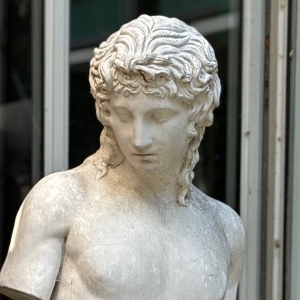
Sculptures at Sparta
In the courtyard of Sparta stand two sculptures inspired by Greek mythology. The male figure represents Eros, while the female torso is believed to depict Aphrodite. The sculptures were installed during the renovation of the courtyard in 2006 and have since become part of the outdoor environment of the area.
About the artworks
 The two sculptures stand on pedestals made of cast sandstone composite and are firmly anchored in the ground. The male figure is a reproduction of Eros di Centocelle, a Roman sculpture found in the Centocelle district of Rome. Eros is the god of love in Greek mythology. He can be seen both as an ancient creative force and as a playful, winged boy.
The two sculptures stand on pedestals made of cast sandstone composite and are firmly anchored in the ground. The male figure is a reproduction of Eros di Centocelle, a Roman sculpture found in the Centocelle district of Rome. Eros is the god of love in Greek mythology. He can be seen both as an ancient creative force and as a playful, winged boy.
The female torso is believed to represent Aphrodite, the goddess of love, beauty, and fertility in Greek mythology. She was one of the most beloved and frequently depicted deities of antiquity, often portrayed as the ideal of female beauty.
The artist behind the sculptures
The sculptures have no known artist. They are based on Roman marble sculptures, which in turn were inspired by even older Greek works from ancient time. Casts like these are not unique, there are often several copies made from the same mould.
The actual casting of these examples was done by the plasterwork company Hans Rhätel AB. The moulds come from the Danish company V. Nordahl Petersen in Copenhagen. Hans Rhätel worked there in the 1960s. When the company closed down, he took over the moulds and has since used them in his work in Sweden.